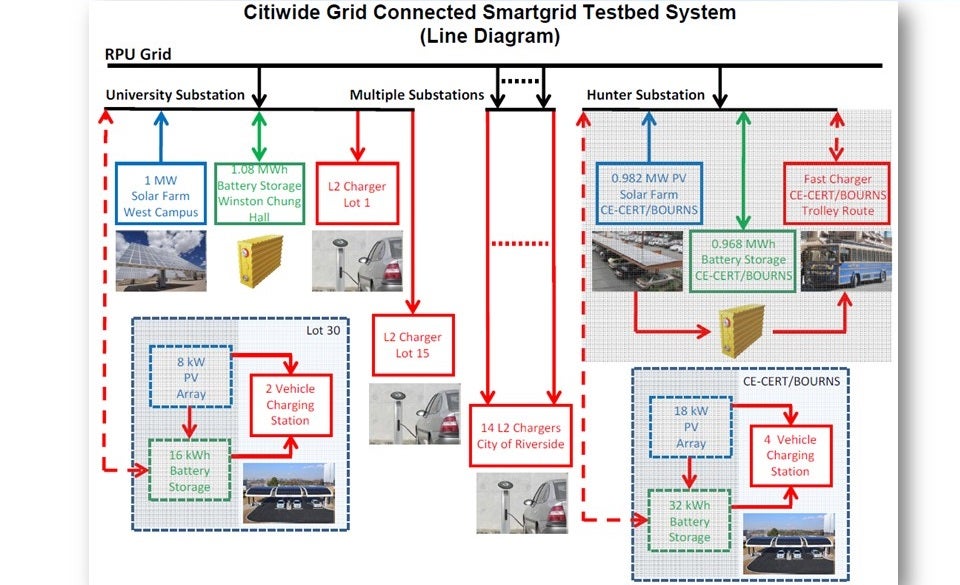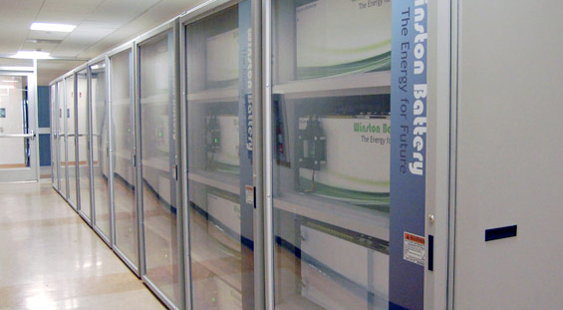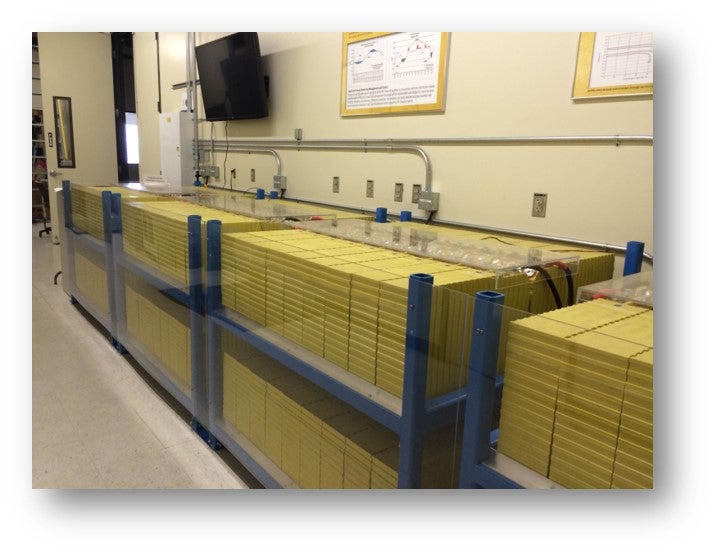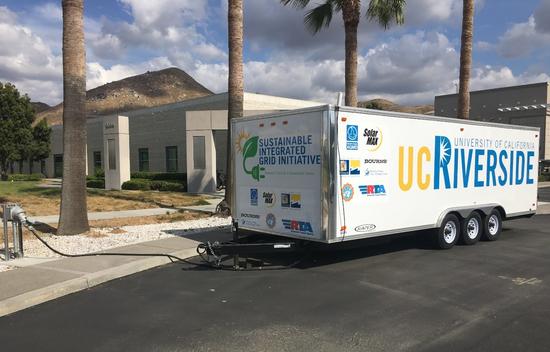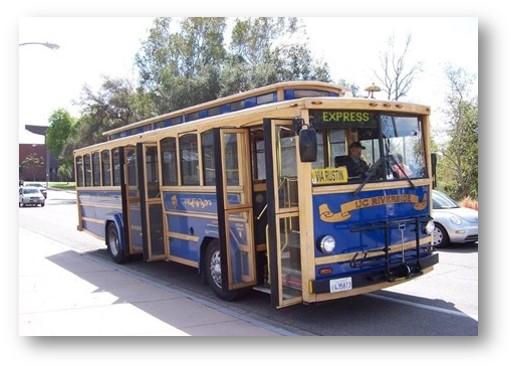
Facilities
Off-Campus Facilities
Sustainable Integrated Grid Initiative (SIGI)
The Sustainable Integrated Grid Initiative (SIGI) is comprised of several key features that demonstrate the integration of intermittent renewable energy, energy storage, and the use of electric and hybrid electric vehicles.
EV Chargers
Throughout the city of Riverside are EV chargers used to service a variety of electric and hybrid electric vehicles.
- 26 Level-2 chargers placed throughout the City of Riverside, the chargers service fleet and private vehicles
- Level-3 chargers installed in the Fall of 2015 and service the electric trolley and other fast charging vehicles
Solar PV System
The Bourns Technology Center research campus is serving as home to the newly implemented 500 kW of photovoltaic power generation and is being integrated with energy storage and smart grid monitoring and control. Solar generation will be optimized to reduce peak demand on the local distribution feeder. Facility power usage, monitoring, and control will implement energy optimization strategies for daily power demand.
Winston Chung Stationary Battery System
Winston Chung Hall
One megawatt-hour of battery energy storage was installed at UC Riverside’s Winston Chung Hall. The system is physically comprised of two 500 kilowatt-hour systems; each with its own inverter, battery management system (BMS), and control hardware. The Princeton Power Systems bi-directional inverters are capable of charging the batteries at a rate of up to 95kW/h, and discharging at up to 100kW/h. The Ewert Energy Systems BMS provides real-time data of the system, including pack state-of-charge, pack voltage, and pack current. The control hardware provides a gateway to inverter control, inverter data, and BMS data, and allows implementation of different control algorithms such as peak-shaving, and demand-response. The control hardware was developed using the Arduino platform.
Bourns Technology Center
500 kilowatt-hours of battery energy storage were installed in Bourns Technology Center’s 1200 building. This system has a similar design to the systems in Winston Chung Hall and uses the same components as well.
Winston Chung Mobile Battery System
A 500 kilowatt-hour battery system was implemented in an enclosed box trailer. This system also shares the same design as the 1200 building, and Winston Chung Hall systems. It uses the same model of inverter and BMS as well. The control hardware on this system was implemented using Opto22 SNAP PAC hardware. The mobile nature of this system allows for connecting to the different Bourns Technology Center buildings, and implementing different strategies.
Building Monitoring & Control
The Administration Building of UC Riverside’s Bourns Technology Center is a 6,500 square feet office building that has typical electrical load consisting of air conditioners, office equipment, lighting, refrigerators, computers, and other plug loads. However, the main power usage is from 16 roof-mounted Heating Ventilating and Air Conditioning (HVAC) units. As these units turn on and off as needed, during certain periods of the month, all 16 units come on at the same time creating a large peak demand. Electric utilities bill the user a peak demand charge based on a 15 minutes rolling average. There is a significant potential for electrical saving when a user can manage to reduce this monthly peak.
In this project, a sensing and control system was designed and implemented for peak reduction in this building. Commercially available hardware and software where adapted to control run times of these 16 HVAC units.
Trolley Bus Electric Conversion and Integration
Bourns Technology Center’s 32-passenger trolley is powered by a 155kWh battery pack, powering a 350V motor with a max output of 90 kW. This diesel trolley from UCR’s Transportation and Parking Services department was converted to a fully electric drivetrain.

